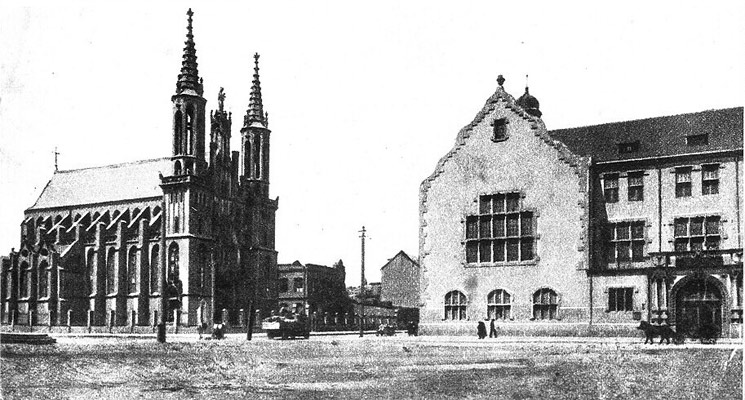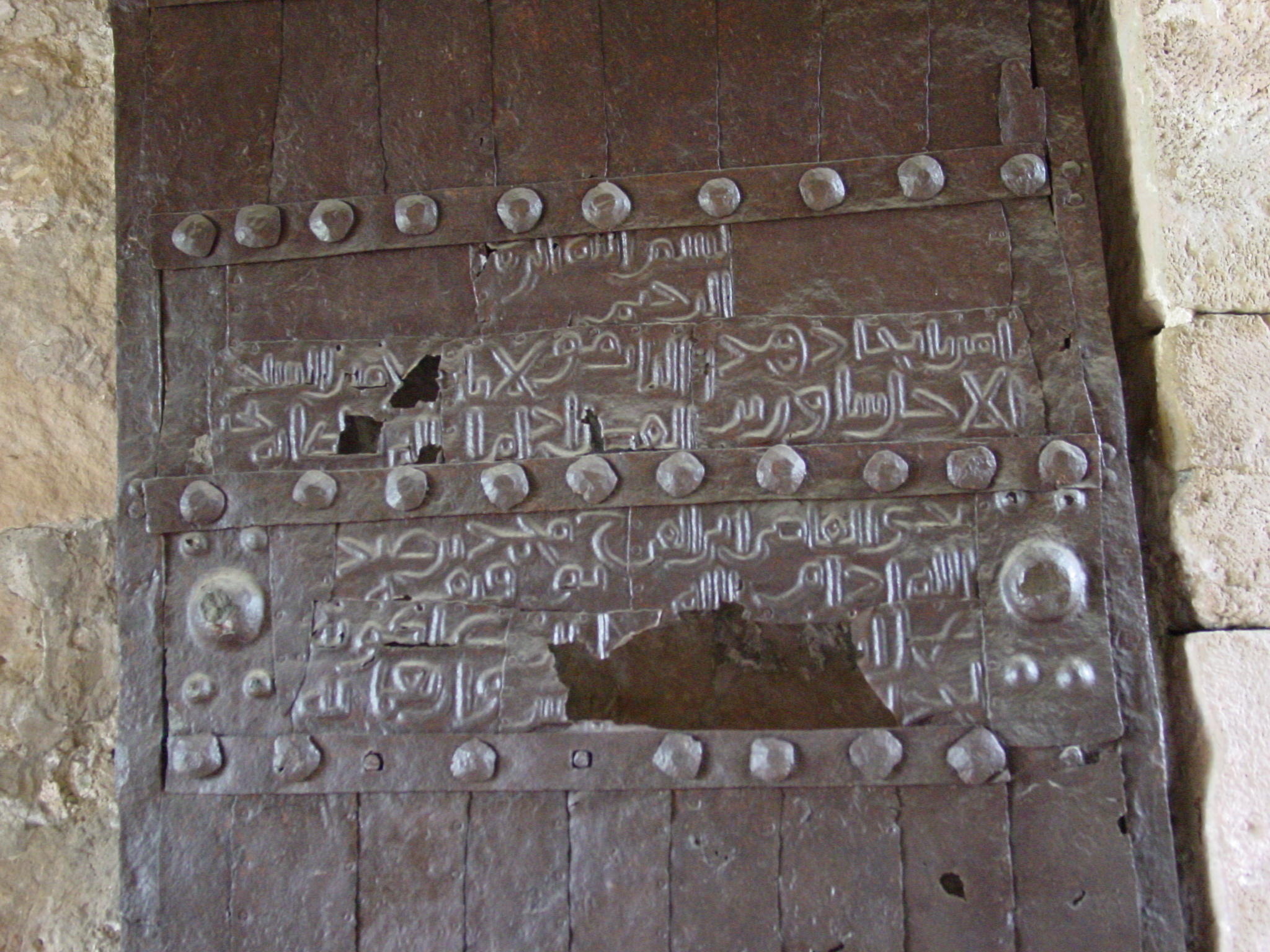|
Roman Catholicism In Azerbaijan
The Catholic Church in Azerbaijan is part of the worldwide Catholic Church, under the spiritual leadership of the Pope in Rome. There are about 570 local Catholics in the country as of 2016. Azerbaijan is covered entirely by a single Apostolic Prefecture – Apostolic Prefecture of Baku – since 2011. The community is served by seven Salesian priests and two friars. In addition, there is a mission of the Missionaries of Charity.Архиепископ Павел Пецци рукоположил семинариста Бехбуда Мустафаева в сан диакона . Catholic Archdiocese of Moscow. 29 May 2016. Origins Christians have been ...[...More Info...] [...Related Items...] OR: [Wikipedia] [Google] [Baidu] |
Catholic Church
The Catholic Church, also known as the Roman Catholic Church, is the largest Christian church, with 1.3 billion baptized Catholics worldwide . It is among the world's oldest and largest international institutions, and has played a prominent role in the history and development of Western civilization.O'Collins, p. v (preface). The church consists of 24 ''sui iuris'' churches, including the Latin Church and 23 Eastern Catholic Churches, which comprise almost 3,500 dioceses and eparchies located around the world. The pope, who is the bishop of Rome, is the chief pastor of the church. The bishopric of Rome, known as the Holy See, is the central governing authority of the church. The administrative body of the Holy See, the Roman Curia, has its principal offices in Vatican City, a small enclave of the Italian city of Rome, of which the pope is head of state. The core beliefs of Catholicism are found in the Nicene Creed. The Catholic Church teaches that it is the on ... [...More Info...] [...Related Items...] OR: [Wikipedia] [Google] [Baidu] |
Ganja, Azerbaijan
Ganja (; az, Gəncə ) is Azerbaijan's third largest city, with a population of around 335,600.Azərbaycan Respublikası. — 2. Azərbaycan Respublikasının iqtisadi və inzibati rayonları. — 2.4. Azərbaycan Respublikasının iqtisadi və inzibati rayonlarının ərazisi, əhalisinin sayı və sıxlığı, səhifə 66. /Azərbaycanın əhalisi (statistik bülleten) Müəllifi: State Statistics Committee, Azərbaycan Respublikasının Dövlət Statistika Komitəsi. Buraxılışa məsul şəxs: Rza Allahverdiyev. Bakı — 2015, 134 səhifə. The city has been a historic and cultural center throughout most of its existence. It was the capital of the Ganja Khanate until 1804; after Qajar Iran ceded it to the Russian Empire following the Treaty of Gulistan in 1813, it became part of the administrative divisions of the Georgia Governorate, Georgia-Imeretia Governorate, Tiflis Governorate, and Elizavetpol Governorate. Following the dissolution of the Russian Empire and the Transc ... [...More Info...] [...Related Items...] OR: [Wikipedia] [Google] [Baidu] |
Siyaqut
Siyaqut (also, Siyagut and Siyakut) is a village and municipality in the Sharur District of Nakhchivan, Azerbaijan. It is located 10 km in the south-east from the district center, on the Sharur plain. Its population of 1,577 is busy with gardening, vegetable-growing and beet-growing. There are a secondary school, two libraries, club, cultural center, park, mosque and a medical center in the village. Etymology and history The settlement was founded by the Assyrian families which moved from the Siyaqut village of Iran in the beginning of the 19th century. The name made out from the components of the Iranian words of ''siya'' (black) and ''gut'' (fortress) means "black fortress". The village was founded in the 1850s by Assyrian immigrants from Salmas, Persia, and remained the only Chaldean Christian village in the South Caucasus, then under the control of the Russian Empire. Beginning in the 1880s, the priest serving in Siyaqut was ordained by the Roman Catholic Roman or Roma ... [...More Info...] [...Related Items...] OR: [Wikipedia] [Google] [Baidu] |
1859 Shamakhi Earthquake
The 1859 Shamakhi earthquake struck Shamakhi in the Baku Governorate (present-day Azerbaijan Republic) of the Russian Empire, on 11 June. The earthquake had an estimated magnitude of 5.9 and caused moderate damage and killed approximately 100 people. See also * List of earthquakes in Azerbaijan This list of earthquakes in Azerbaijan, is a list of notable earthquakes that have affected areas within the current boundaries of Azerbaijan. See also *Geology of Azerbaijan References {{Europe topic, List of earthquakes in Azerbaijan ... References Earthquakes in Azerbaijan 19th century in Azerbaijan 1859 earthquakes 1859 in the Russian Empire 1859 disasters in the Russian Empire June 1859 events {{Azerbaijan-hist-stub ... [...More Info...] [...Related Items...] OR: [Wikipedia] [Google] [Baidu] |
Western Europe
Western Europe is the western region of Europe. The region's countries and territories vary depending on context. The concept of "the West" appeared in Europe in juxtaposition to "the East" and originally applied to the ancient Mediterranean world, the Roman Empire (Western Roman Empire and Eastern Roman Empire), and medieval "Christendom" (Western Christianity and Eastern Christianity). Beginning with the Renaissance and the Age of Discovery, roughly from the 15th century, the concept of ''Europe'' as "the West" slowly became distinguished from and eventually replaced the dominant use of "Christendom" as the preferred endonym within the region. By the Age of Enlightenment and the Industrial Revolution, the concepts of "Eastern Europe" and "Western Europe" were more regularly used. Historical divisions Classical antiquity and medieval origins Prior to the Roman conquest, a large part of Western Europe had adopted the newly developed La Tène culture. As the Roman domain ... [...More Info...] [...Related Items...] OR: [Wikipedia] [Google] [Baidu] |
Armenian Catholic Church
, native_name_lang = hy , image = St Elie - St Gregory Armenian Catholic Cathedral.jpg , imagewidth = 260px , alt = , caption = Cathedral of Saint Elias and Saint Gregory the Illuminator in Beirut, the cathedra of the Armenian Catholic Patriarchate of Cilicia. , abbreviation = , type = , main_classification = Eastern Catholic , orientation = Eastern Christianity (Armenian) , scripture = , theology = Catholic theology , polity = Episcopal , governance = , structure = , leader_title1 = Pope , leader_name1 = Francis , leader_title2 = Patriarch , leader_name2 = Raphaël Bedros XXI Minassian , leader_title3 = , leader_name3 = , fellowships_type = , fellowships = , fellowships_type1 = , fellowships1 = , division_type = , division = , divisio ... [...More Info...] [...Related Items...] OR: [Wikipedia] [Google] [Baidu] |
Georgian Catholic Church
The Catholic Church in Georgia, since the 11th-century East–West Schism, has been composed mainly of Latin Church Catholics; a very large community of the Armenian Catholic Church has existed in Georgia since the 18th century. A Georgian Greek Catholic Church, although small, has existed for a number of centuries. It has never constituted an autonomous ("sui iuris") Church, as defined by Canon 27 of the ''Code of Canons of the Eastern Churches'', which have a hierarchy of their own and are recognized as autonomous by the supreme authority of the Church. Outside Georgia, a small parish has long existed in Istanbul, centered on Our Lady of Lourdes Church, Istanbul, founded in 1861. This was never established as a recognized particular church of any level (exarchate, ordinariate, etc.), within the communion of Catholic Churches, and accordingly has never appeared in the list of Eastern Catholic Churches published in the ''Annuario Pontificio''. History Christianity in Georgia ... [...More Info...] [...Related Items...] OR: [Wikipedia] [Google] [Baidu] |
Ukrainians
Ukrainians ( uk, Українці, Ukraintsi, ) are an East Slavs, East Slavic ethnic group native to Ukraine. They are the seventh-largest nation in Europe. The native language of the Ukrainians is Ukrainian language, Ukrainian. The majority of Ukrainians are Eastern Orthodox Church, Eastern Orthodox Christians. While under the Polish–Lithuanian Commonwealth, the Austrian Empire, and then Austria-Hungary, the East Slavic population who lived in the territories of modern-day Ukraine were historically known as Ruthenians, referring to the territory of Ruthenia, and to distinguish them with the Ukrainians living under the Russian Empire, who were known as Little Russians, named after the territory of Little Russia. Cossacks#Ukrainian Cossacks, Cossack heritage is especially emphasized, for example in the Shche ne vmerla Ukraina, Ukrainian national anthem. Ethnonym The ethnonym ''Ukrainians'' came into wide use only in the 20th century after the territory of Ukraine obtained ... [...More Info...] [...Related Items...] OR: [Wikipedia] [Google] [Baidu] |
Polish People
Poles,, ; singular masculine: ''Polak'', singular feminine: ''Polka'' or Polish people, are a West Slavic nation and ethnic group, who share a common history, culture, the Polish language and are identified with the country of Poland in Central Europe. The preamble to the Constitution of the Republic of Poland defines the Polish nation as comprising all the citizens of Poland, regardless of heritage or ethnicity. The majority of Poles adhere to Roman Catholicism. The population of self-declared Poles in Poland is estimated at 37,394,000 out of an overall population of 38,512,000 (based on the 2011 census), of whom 36,522,000 declared Polish alone. A wide-ranging Polish diaspora (the '' Polonia'') exists throughout Europe, the Americas, and in Australasia. Today, the largest urban concentrations of Poles are within the Warsaw and Silesian metropolitan areas. Ethnic Poles are considered to be the descendants of the ancient West Slavic Lechites and other tribes that inhabite ... [...More Info...] [...Related Items...] OR: [Wikipedia] [Google] [Baidu] |
Russian Empire
The Russian Empire was an empire and the final period of the Russian monarchy from 1721 to 1917, ruling across large parts of Eurasia. It succeeded the Tsardom of Russia following the Treaty of Nystad, which ended the Great Northern War. The rise of the Russian Empire coincided with the decline of neighbouring rival powers: the Swedish Empire, the Polish–Lithuanian Commonwealth, Qajar Iran, the Ottoman Empire, and Qing China. It also held colonies in North America between 1799 and 1867. Covering an area of approximately , it remains the third-largest empire in history, surpassed only by the British Empire and the Mongol Empire; it ruled over a population of 125.6 million people per the 1897 Russian census, which was the only census carried out during the entire imperial period. Owing to its geographic extent across three continents at its peak, it featured great ethnic, linguistic, religious, and economic diversity. From the 10th–17th centuries, the land ... [...More Info...] [...Related Items...] OR: [Wikipedia] [Google] [Baidu] |
Armenian Apostolic Church
, native_name_lang = hy , icon = Armenian Apostolic Church logo.svg , icon_width = 100px , icon_alt = , image = Էջմիածնի_Մայր_Տաճար.jpg , imagewidth = 250px , alt = , caption = Etchmiadzin Cathedral, the mother church of the Armenian Apostolic Church , abbreviation = , type = , main_classification = Eastern Christian , orientation = Oriental Orthodox , scripture = Septuagint, New Testament, Armenian versions , theology = Miaphysitism , polity = Episcopal , governance = Mother See of Holy Etchmiadzin , structure = , leader_title = Head , leader_name = Catholicos of All Armenians Karekin II , leader_title1 = , leader_name1 = , leader_title2 = , leader_name2 = , leader_title3 = , leader_name3 = , associations ... [...More Info...] [...Related Items...] OR: [Wikipedia] [Google] [Baidu] |

.jpg)





